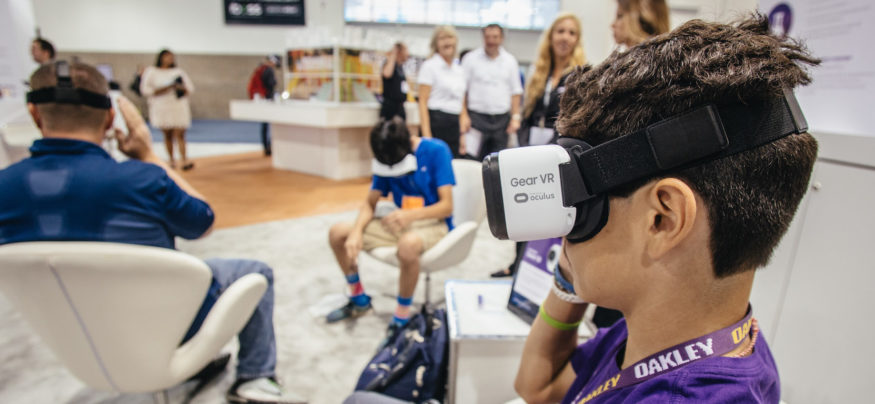New advancements in virtual reality headsets — like Samsung’s Gear VR — have made VR for education more accessible and affordable, and it’s poised to have a significant impact on schools.
Virtual reality immerses students in 3D learning experiences they otherwise wouldn’t have. For instance, using apps such as Labster, they can perform virtual experiments and run advanced simulations that once were performed only in multimillion-dollar facilities. Students find immersive VR technology motivating and engaging — and early adopters of the technology have seen incredible results in their classrooms.
“Ever since we started using the Gear VR, kids have been coming to school early and staying late,” one educator says. “Everybody wants to try it. It’s the coolest thing.”
Watch the video below to hear more of what participants at the 2016 International Society for Technology in Education (ISTE) conference had to say about the tremendous implications of immersive VR technology on teaching and learning.







